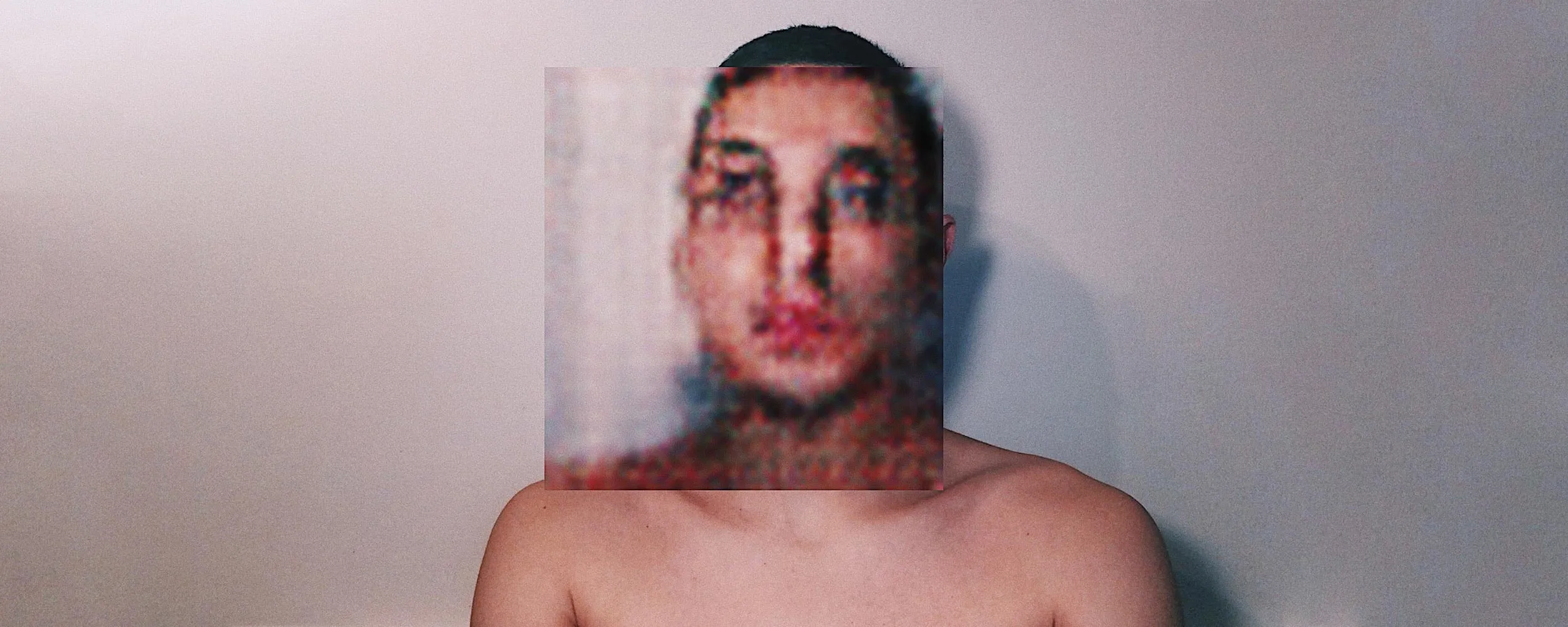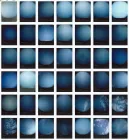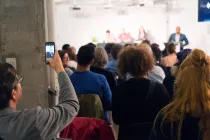This program is part of the Critical Jamming series, presented by the ICP Lab. The ICP Lab is a new home for visual storytellers to experiment with technology and create interactive and immersive experiences.
Artists, academics, and others come together to explore the intersection of language, technology, and visual media in the construction of our perception of ourselves, each other, and the world. Audience participation encouraged.
Speaker Bios
Per Gylfe, director of education, came to ICP in 2000 as a student of the Documentary Photography and Photojournalism One-Year Certificate program. He was employed by ICP in 2001 and has held several different positions since then. He was hired in his current position in 2015. During his time at ICP, Gylfe helped build out ICP’s digital media labs and developed ICP’s digital photography and digital printmaking offerings. He also managed the development and implementation of ICP online education platform. As a teacher, Gylfe has taught numerous classes in ICP’s continuing education program as well as in ICP’s Full-Time programs. Gylfe holds a BFA in photography from the Film and TV School of the Academy of Performing Arts–FAMU, Prague, Czech Republic.
Mafe Izaguirre is a New York-based Venezuelan visual artist, graphic designer, and educator focusing her research on the conceptual image of the mind in new media. She received a BA degree in design from Prodiseño School of Visual Communication Caracas, Venezuela. In parallel, Izaguirre worked as lead designer, developing brand platforms at Saatchi & Saatchi, Venezuela. In 2016, she moved to New York to pursue her research with the creation of machines that can feel. Based on The Emotion Machine by Marvin Minsky, Izaguirre’s work explores the creation of artifacts that mimic human senses and consciousness. Since 2011, she has led Simple7 Design Lab, a strategic advisory firm in marketing and outreach for brands. She currently works as an artist member of Fat Cat Fab Lab, the Long Island City Artist Association (LICA), and as a tech mentor at Mouse Inc. and the Bronx based non-profit DreamYard Project. She is a board member of Room: A Sketchbook for Analytic Action, founded by IPTAR.
Paul Pangaro is a performer, educator, entrepreneur, and cybernetician. In the tradition of his mentors (Jerry Lettvin, Gordon Pask, Heinz von Foerster, and Michael C Geoghegan), he is a professional dilettante. After a BS degree in humanities and computer science at MIT, he was hired by Nicholas Negroponte to join the MIT Architecture Machine Group (predecessor to the MIT Media Lab), whose goal was to create machines conversant with designers about design goals and outcomes. At Brunel University (UK), Gordon Pask was his advisor and collaborator in research contacts. Pangaro pursued a career in startups as either co-founder or CTO, most often to develop new forms of conversational systems. In parallel, he did future-casting and organizational consulting for clients including Du Pont, Nokia, Samsung, Instituto Itaú Cultural (São Paulo), Ogilvy & Mather, Intellectual Ventures, and the Poetry Foundation. He is currently chair and associate professor, MFA Interaction Design, at the College for Creative Studies in Detroit. His design research explicates “designing for conversation.” His lectures in São Paulo, Paris, Berlin, Vienna, Linz, and the US, are available online at pangaro.com.
Rinat Sherzer is an interdisciplinary scientist, engineer, and experience designer. Creating ventures at the intersection of tech, design, abd social good. She is the founder of two ventures aligned with her vision: It Makes Sense, a nonprofit organization helping people deal with anxiety and Of Course, an agency empowering businesses to become a force of good in society and incorporate social innovation in their practice. Among their clients are Capital One, Pfizer, and Global Citizen. Sherzer holds a bachelor’s degree in biotechnology engineering from Ben-Gurion University, Israel and a MFA in design for social innovation from the School of Visual Arts, NYC. Sherzer teaches sensory design as well as human-centered design in many universities, including Harvard, Cooper Union, Cornell, NYU, Bard, Parsons, and Universidad San Francisco de Quito. Sherzer’s deepest passion lies in helping women reclaim their power and does that through mentoring, lectures, and workshop facilitation around the world.
Miles Goscha is an artist. After graduating from Ringling College of Art and Design with a BFA in photography in 2017, he moved to New York to pursue his creative practice full-time. His recent projects include creating the alt-gov activist Twitter account @altFBI and co-founding Dollop, a gamified news platform that seeks to improve media literacy and facilitate the cross-pollination of information bubbles. He makes art in a variety of mediums, including performance and multimedia, and is currently most concerned with creating where technology intersects with contemporary notions of truth and identity. Miles is also a graduate of ICP’s One-Year Certificate program, where he was part of the 2014–2015 General Studies cohort.
Jeanna Matthews is an associate professor of computer science at Clarkson University and a 2017–2018 fellow at Data and Society. She is member of the Executive Committee of US-ACM, the US Public Policy Committee of ACM and one of the co-chairs of their subcommittee on algorithmic transparency and accountability. Her broader research interests include virtualization, cloud computing, computer security, computer networks, and operating systems. She is also a photographer and writer. Jeanna received her PhD in computer science from the University of California at Berkeley and is an ACM Distinguished Speaker.






